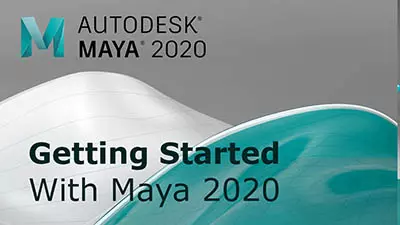Introduction to Maya - Modeling Fundamentals Vol 1
This course will look at the fundamentals of modeling in Maya with an emphasis on creating good topology. We'll look at what makes a good model in Maya and why objects are modeled in the way they are.
#
1
19-04-2012
, 09:33 PM
Registered User
Join Date: Mar 2012
Join Date: Mar 2012
Posts: 31
Mesh Combine
Thanks,
Ever Try, Ever Fail, No Matter. Try Again, Fail Again, Fail Better.
#
2
19-04-2012
, 09:51 PM
EduSciVis-er
Join Date: Dec 2005
Join Date: Dec 2005
Location: Toronto
Posts: 3,374
#
3
19-04-2012
, 09:55 PM
You want to know if it is better to combine objects (mesh>combine) (the objects remain separate) or unify the objects into a single mesh?
That really depends on a lot of things, the most critical of which would be how close will the camera get to the objects and how long they will be in shot and how well lit they are. If the camera is sufficiently far from combined objects you will not notice the lack of the natural bevel that would exist on a unified part.
Also, components that have their junctions covered may be combined to save the time and effort it would take to combine them.
For close shots unifying objects would have the most realistic appearance. Light will reflect off the junctions of the object and look more natural. However, you need to consider the extra time needed to combine and then route geometry to be able to smooth the objects.
Scale effects alot of this too. For a gigantic 60' tall robot you are not going to notice whether a 2' square gear box is made of of 50 parts just stuffed into each other that would take you 3 minutes to assemble or the same part as a unified mesh that took 3 days to work out the topology.
In your example images above, if you intended to smooth that unified cylinder and box you would need to add support edges and would have to deal with puckering in the corners of the box/cylinder junction or creasing of the cylinder as a result of any support edges that ran the lengthwise.
So it really just depends. The camera distance, model scale, technical requirements, lighting, speed of the object in the scene, time the object will be in shot....
I know it's kind of a "cop out" answer but it's the best I can come up with. If I had unlimited time, don't know how close the camera will ever get to the shot, the geometry is not insanely complex, than I strive to unify and smooth as this will give the best result in all possible situations. But in production it's always a balance of time vs accuracy.
Maybe Jay would have a more meaningful opinion as he works in the film and entertainment industry and is always having to struggle with the time vs accuracy dilemma. So he might have some more structured rules for when to unify vs when to combine.
"If I have seen further it is by standing on the shoulders of giants." Sir Isaac Newton, 1675
Last edited by ctbram; 19-04-2012 at 11:08 PM.
#
4
19-04-2012
, 10:58 PM
The only problem I've ever seen crop up when not combining objects, is when the two intersect. Some renderers, or techniques, may cause artifacts in those areas. It's also more of a pain to UV the model, as you have to keep jumping back and forth between the objects to make sure nothing is overlapping. Painting skin weights on multiple objects can be a pain as well.
Rule of thumb with everything in 3d: Deal with it later. If it causes a problem later on, fix it then
 As you get more and more experienced, you'll be able to preempt these problems, which will make you more efficient.
As you get more and more experienced, you'll be able to preempt these problems, which will make you more efficient.
Imagination is more important than knowledge.
Last edited by NextDesign; 19-04-2012 at 11:01 PM.
#
5
20-04-2012
, 10:28 AM
Registered User
Join Date: Jan 2012
Join Date: Jan 2012
Posts: 43
There is a third solution, to cut the penetrating one and move the vertices as close as you can to the other surface.
#
6
20-04-2012
, 12:32 PM
I have never seen that in production. That would cause horrible artifacting in renders, especially with raytracing.There is a third solution, to cut the penetrating one and move the vertices as close as you can to the other surface.
Imagination is more important than knowledge.
#
7
20-04-2012
, 01:03 PM
its a case of thinking about the topology, will you benefit from extruding say an air intake/scoop on a surface because it is moulded or shall I model a separate scoop with a nice bevelled edge and sit that on the surface so the light pick up the edges...this of course would mean intersecting geometry which is acceptable and for the most part unavoidable. Depends on the detail and the type of design you are doing.
You could build say a piece of footwear like a boot as one object and cut in the detail, or even use dispalcement, or if it is to be a high res boot then I would make it out of say four to five pieces of geo with nice edges and place them all accordingly, so you would have the sole, heel, and then maybe three bits of geo for the upper leather which would consist of the main leg/calf leather, heel leather and finally the main foot area at the mid going to the toes.
So as I said, with all in one meshes you have to think about the edge loops keeping the flow right, no odd geo and bevel to make edges sharp if need be, whereas with separate geo you still need to to keep the geo looking good but if the geo intersects just delete what you arent going to see. Plus the fact you arent going to worry about matching the geo edge for edge and so on...
to cut the mesh though and place the verts and snap them to others is pointless, firstly because it wont render correctly but also you may as well just merge into one mesh.
hope this helps
J
#
8
20-04-2012
, 07:08 PM
Registered User
Join Date: Mar 2012
Join Date: Mar 2012
Posts: 31

Ever Try, Ever Fail, No Matter. Try Again, Fail Again, Fail Better.
Posting Rules Forum Rules
Similar Threads
trouble opening maya scene
by jooleyinboots in forum Maya Technical Issues replies 3 on 07-10-2022
Separate Materials on Single Mesh
by foldedpaperbird in forum Maya Basics & Newbie Lounge replies 13 on 14-11-2013
Good Mesh - Bad Mesh
by Philcc in forum Maya Modeling replies 8 on 06-04-2013
Animation VS Mesh Density
by cgisoul in forum Maya Basics & Newbie Lounge replies 7 on 09-03-2012
Mesh has an unwanted "second body"
by Tristanartform in forum Maya Technical Issues replies 7 on 26-10-2007
Topics
Free Courses
Full Courses
VFX News
How computer animation was used 30 years ago to make a Roger Rabbit short
On 2022-07-18 14:30:13
Sneak peek at Houdini 19.5
On 2022-07-18 14:17:59
VFX Breakdown The Man Who Fell To Earth
On 2022-07-15 13:14:36
Resident Evil - Teaser Trailer
On 2022-05-13 13:52:25
New cloud modeling nodes for Bifrost
On 2022-05-02 20:24:13
MPC Showreel 2022
On 2022-04-13 16:02:13










